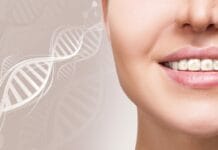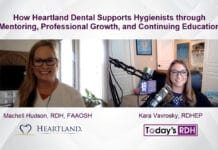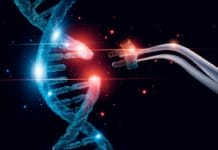The oral microbiome is becoming more central in the understanding of oral health and disease. During the past decade, oral microbiology has progressed from studying individual pathogens to the entire polymicrobial community. This shift has contributed to identifying over 700 species of bacteria in the oral cavity.1
The change in focus has led scientists to understand that it is not the presence of any one bacterium that causes oral disease. Instead, the entire community of bacteria and their interactions with one another and the host contribute to oral disease onset and progression.1
The term “dark matter” is often used to study the universe’s development, also called cosmology.2 In cosmology, “dark matter” refers to matter that can only be hypothesized to exist by observing gravitational effects. The term is now being adopted and used in microbiology to describe microorganisms that scientists know exist yet cannot study. The inability to study these microorganisms is attributed to the inability to culture them.1
Most dental professionals are very familiar with Porphyromonas gingivalis, Fusobacterium nucleatum, Actinomyces israelii, and Streptococcus mutans and their role in oral health and disease onset and progression. These bacteria have been studied for over 100 years. However, in recent years, scientists have successfully cultured previously elusive microbes.1,3
Next Generation Sequencing
Newer methods for sequencing, called next-generation sequencing (NGS), allow scientists to sequence DNA and RNA from microorganisms rapidly. NGS further enables scientists to analyze entire microbial genomes, study microbial communities, and detect genetic variations quickly and accurately.4
NGS has identified an entirely new group of bacteria, a lineage of that group, and a new “viroid-like” element.1,3
Candidate Phyla Radiation and Saccharibacteria
Candidate Phyla Radiation (CPR) is a new group of bacteria that was first cultured using NGS in 2014. Scientists believe that CPR makes up around 25% of all bacterial diversity on Earth. In addition to the oral cavity, CPR is also found in multiple environments and animals.1
Once considered dark matter and known as TM7, Saccharibacteria is the only lineage from this group that has been successfully cultured. This bacterium was primarily acquired from the oral cavity for culture.1
Bacteria in the CPR lineage have much smaller genomes than free-living bacteria and lack a known metabolic pathway. These bacteria have a deficiency in the membrane, are unable to produce amino acids, and cannot synthesize adenosine triphosphate (ATP).5
Due to the metabolic limitations of CPR bacteria, they are often host-dependent or episymbiotic, and some may be parasitic. Episymbiotic is when one organism lives on the surface of another organism symbiotically. This finding was interesting since most bacteria do not depend on other bacteria as their host. This is the first time episymbiotic behavior has been observed between two different bacterial species.1
Saccharibacteria’s host bacterium is Actinomyces. Actinomyces is associated with both disease and health of the periodontium. Actinomyces does not cause periodontitis, yet it does play a role in disease progression. This led scientists to believe when first studying Saccharibacteria that they may be pathogenic due to their association with Actinomyces and because they are present in higher numbers in other inflammatory diseases besides periodontitis, such as irritable bowel syndrome and vaginosis.1
However, a further study examined how Saccharibacteria interacted with their host bacteria, Actinomyces, in periodontal disease. Scientists introduced Actinomyces into the periodontal space in a mouse model to induce an inflammatory reaction and bone loss mimicking periodontitis. The scientists then introduced Saccharibacteria, and what they observed was surprising. When Saccharibacteria was introduced, inflammation and bone loss decreased significantly.1
The mechanism by which Saccharibacteria decrease inflammation and bone loss has not been identified, but it is believed to regulate the inflammatory response induced by the host bacterium.1
Saccharibacteria is only one strain of hundreds in the lineage living in the human oral microbiome. Beyond the oral cavity, there are 73 families associated with this lineage in the CPR group of bacteria, each responsible for hundreds of lineages. At least three of these families are part of the human microbiome.1
Saccaribacteria have accompanied humans for over 40 million years. Studies identified it in calculus from Neanderthals, well before the introduction of processed sugar. Saccharibacteria and its host bacteria, Actinomyces, are easily transmitted from human to human. This may be a key strategy for survival and evolution for the bacteria to thrive in humans.1
We know these newly identified bacteria are not passive and may play a role in human health and disease. Nonetheless, there is still much to be understood, as Saccharibacteria could potentially negatively or positively affect human health.1
Obelisks
Obelisks are a “viroid-like” element first identified in 2024.3 A viroid is a group of noncoding RNAs that infect plants. To date, there has been no evidence that they infect humans. The RNA genome of a viroid is much smaller than any viral genome and has been described as “subviral.”6 Obelisks are described as “viroid-like” because it isn’t quite a virus yet doesn’t fit the criteria for a viroid.3
Obelisks form a distinct phylogenetic group with no detectable sequence or structural similarity to other known biological agents. They have been detected in 7% of gut microbiome samples and 50% of oral microbiome samples. The composition varies depending on the anatomical site and can persist for up to 300 days. Around 30,000 Obelisks have been identified so far.3
Similar to Saccharibacteria, evidence indicates that at least a fraction of obelisks use bacterium as a host for survival. One host bacterium has been identified for obelisks, Streptococcus sanguinis. Streptococcus sanguinis is a commensal bacterium found in the upper aerodigestive tract and is abundant in dental biofilm. It is associated with oral health and has been shown to modulate caries-causing bacteria. Streptococcus sanguinis may not be inherently beneficial to health, though, as it has also been associated with endocarditis.3
The current understanding of obelisks leaves a lot of questions unanswered. Because there are so many unanswered questions, assigning transmission mode, host impact, and replication is impossible. There is also a chance these elements aren’t viral. They could be more closely related to RNA plasmids than viruses.3 RNA plasmids are noninfectious RNA molecules that replicate independently of the host. Despite not being viruses, they are similar to certain RNA viruses in their replication process.7
The observation that different obelisks were only seen in specific anatomic sites supports the idea that they are indeed part of the human microbiome. With that knowledge, diet and lifestyle choices will likely affect the retention, colonization, and re-colonization of obelisks.3
Lastly, the prevalence and diversity reported on obelisks indicate that similar unrelated “viroid-like” RNAs are likely widespread and yet to be discovered in the human microbiome and beyond.3
In Closing
Our understanding of the world of microbes is still advancing. Newer technology and methods for identifying bacteria and viroid-like elements have improved our understanding of these tiny microbes. The oral microbiome is becoming more well-understood, and its role in oral health and disease has changed how we manage patients. Yet, we still have so much more to learn.
Though the study of CPR bacteria and obelisks is still in the early phases, the potential for use in dentistry is exciting. For instance, knowing that Saccharibacteria reduce the inflammatory effects of their host bacterium could allow it to be utilized in phage therapy. This utilization would target specific oral pathogens and reduce the inflammatory activity of those bacteria.1
Another potential use could be colonization resistance. Colonization resistance promotes colonization of commensal bacteria to protect from opportunistic pathogens, ultimately protecting from disease onset and progression. Saccharibacteria is a great candidate for colonization resistance because their known host bacteria are one of the most stable colonizing microbes. Obelisks’ host bacteria are associated with oral health, also making them a potential candidate for colonization resistance.1,3
Although CPR bacteria and obelisks are newly identified and our understanding of their role in oral health and disease is limited, dental professionals should be aware that we now know there are episymbiotic microbes in the oral cavity. This could change our understanding of oral health and disease as these microbes have significant potential for targeted therapy for oral diseases.
Before you leave, check out the Today’s RDH self-study CE courses. All courses are peer-reviewed and non-sponsored to focus solely on high-quality education. Click here now.
Listen to the Today’s RDH Dental Hygiene Podcast Below:
References
- Sirko, J., Bor, B., He, X. Microbial Dark Matter and the Future of Dentistry. J Am Dent Assoc. 2025; 156(1): 81-84. https://jada.ada.org/article/S0002-8177(24)00640-8/fulltext
- Cosmology. (n.d.). Cambridge Dictionary. https://dictionary.cambridge.org/us/dictionary/english/cosmology
- Zheludev, I.N., Edgar, R.C., Lopez-Galiano, M.J., et al. Viroid-Like Colonists of Human Microbiomes. Cell. 2024; 187(23): 6521-6536.e18. https://pubmed.ncbi.nlm.nih.gov/39481381/
- Satam, H., Joshi, K., Mangrolia, U., et al. Next-Generation Sequencing Technology: Current Trends and Advancements. Biology (Basel). 2023; 12(7): 997. https://pmc.ncbi.nlm.nih.gov/articles/PMC10376292/
- Naud, S., Ibrahim, A., Valles, C., et al. Candidate Phyla Radiation, an Underappreciated Division of the Human Microbiome, and Its Impact on Health and Disease. Clin Microbiol Rev. 2022; 35(3): e0014021. https://pmc.ncbi.nlm.nih.gov/articles/PMC9491188/
- Hao, J., Ma, J., Wang, Y. Understanding Viroids, Endogenous Circular RNAs, and Viroid-Like RNAs in the Context of Biogenesis. PLoS Pathog. 2024; 20(6): e1012299. https://pmc.ncbi.nlm.nih.gov/articles/PMC11210808/
- Clark, D. P., Pazdernik, N. J., & McGehee, M. R. (2019). Plasmids. In Molecular Biology (3rd ed., pp. 712-748). Academic Cell.










